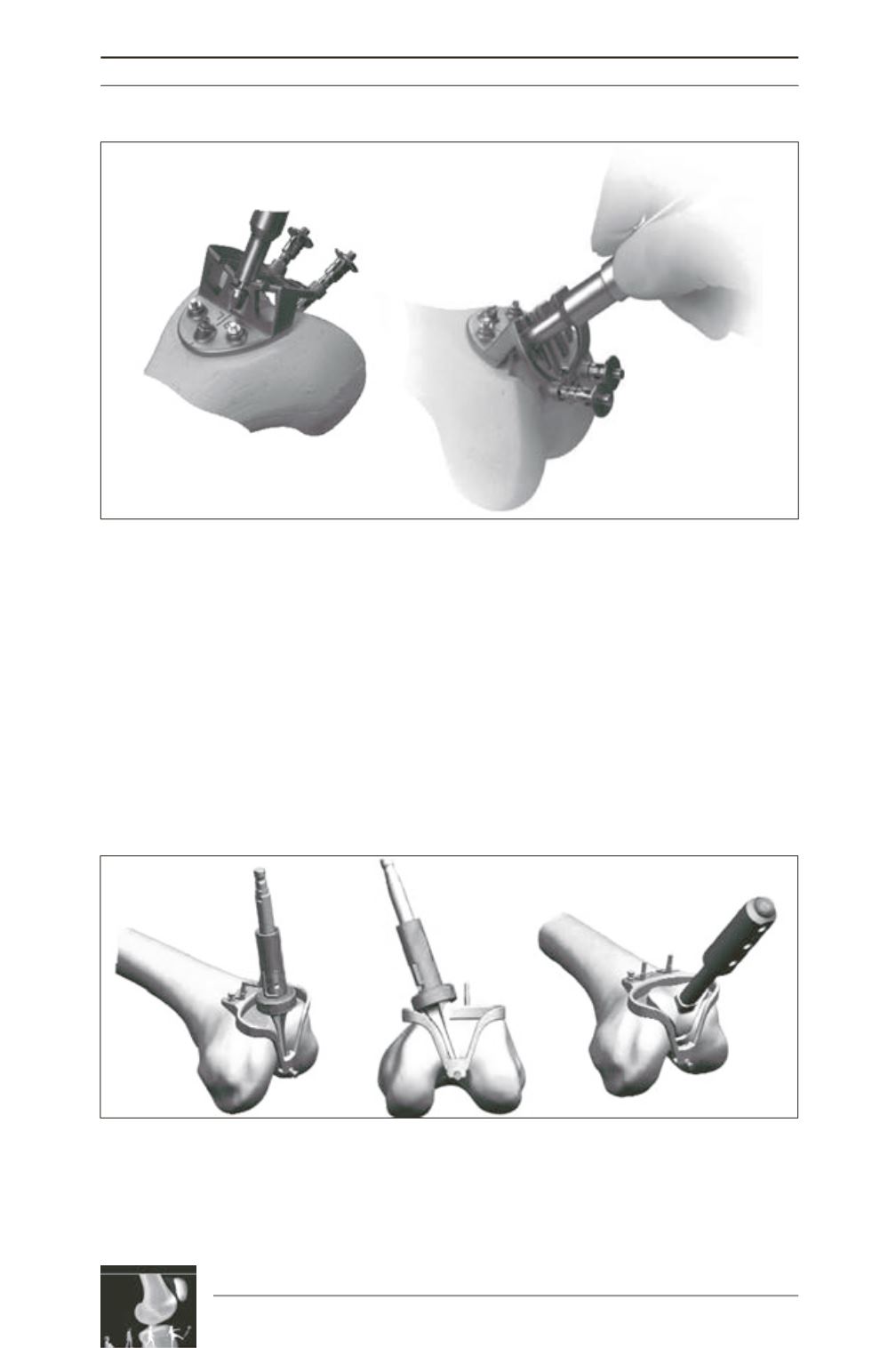

M. Odumenya, S.J. Krikler, A.A. Amis
292
femoral resection is set and not adjustable.
Unfortunately, such inflexibility does not reflect
real life clinical practice in which gross
variability is encountered. In reality, when
confronted with a severely worn, irregularly
shaped distal femur, such standard instru
mentation will not produce the ideal surface to
fit a standard trochlear component. In many
cases, some hand sculpting of the distal femur
is required to get the standard implant to sit
perfectly. For these reasons, the Journey PFA
system offers the surgeon the option of
adjusting the femoral resection depth after the
jig is fixed in position and thus may minimize
the need for the additional freehand fashioning
(see fig. 4A-C).
Fig. 3A-B : Zimmer PFJ milling guide. [A] Burr guard of milling handpiece placed within the central track of
the milling guide. [B] Milling handpiece held perpendicular to milling guide. Slight deviation from this
position due to toggling or binding may potentially result in loss of alignment and an inaccurate resection.
Permission to use images granted by copyright owners© 2012 Zimmer Inc.
Fig. 4A-C : Journey PFJ reamer guide. [A] Yellow standard ream sleeve on reamer shaft is used to achieve
sufficient depth by placing the reamer tip into the round indentation in the reamer guide and reaming from
medial-lateral-medial. [B] Completion of reaming is indicated when the reamer sleeve is in continuous
contact with the reamer guide throughout the range of motion. [C] Trochlear depth gauge is used to
determine adequacy of reaming depth. If more bone is required, other sleeves are available to increase the
depth and width of reamed surface area.
Permission to use images granted by copyright owners Smith & Nephew®.
A
A
B
C
B











